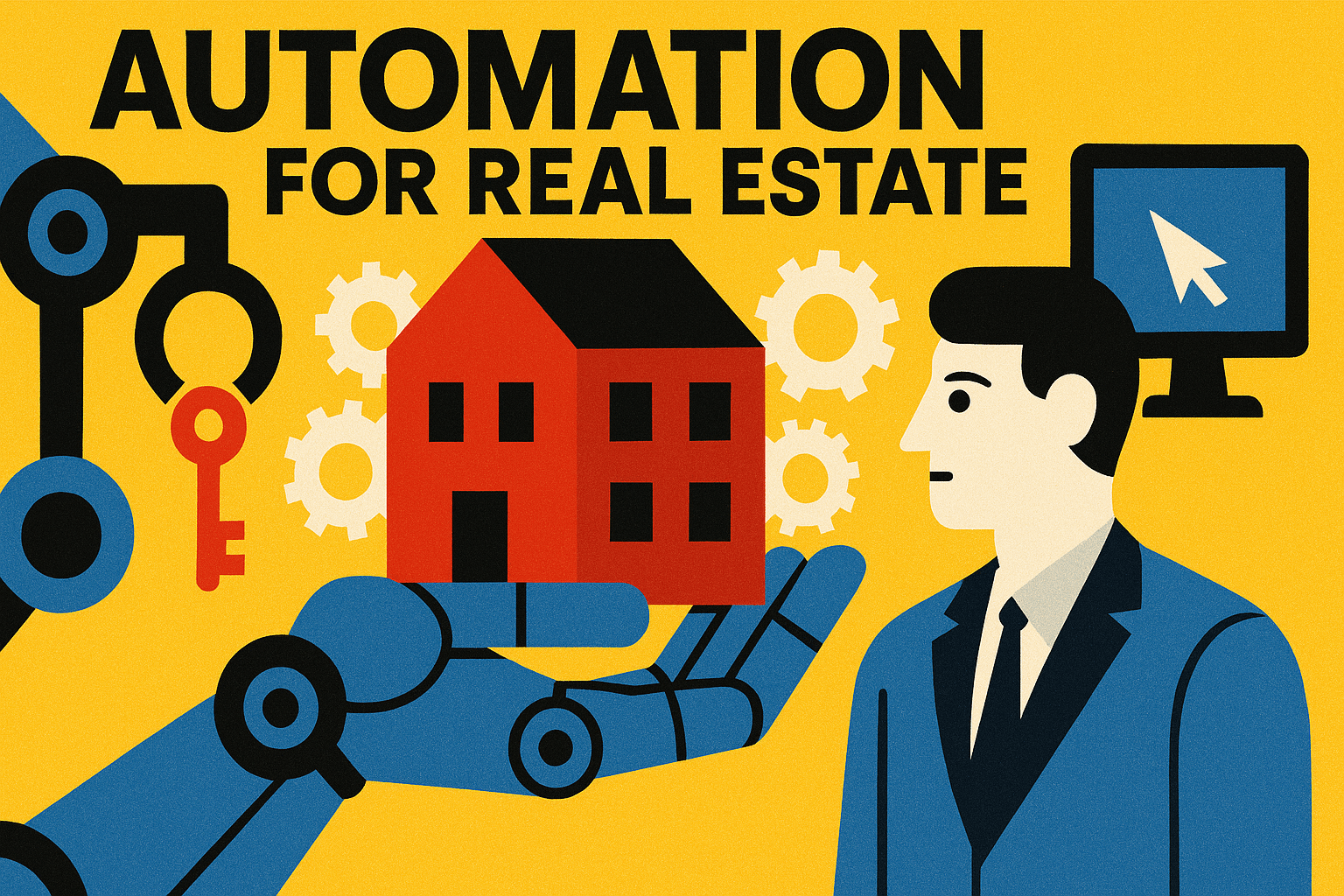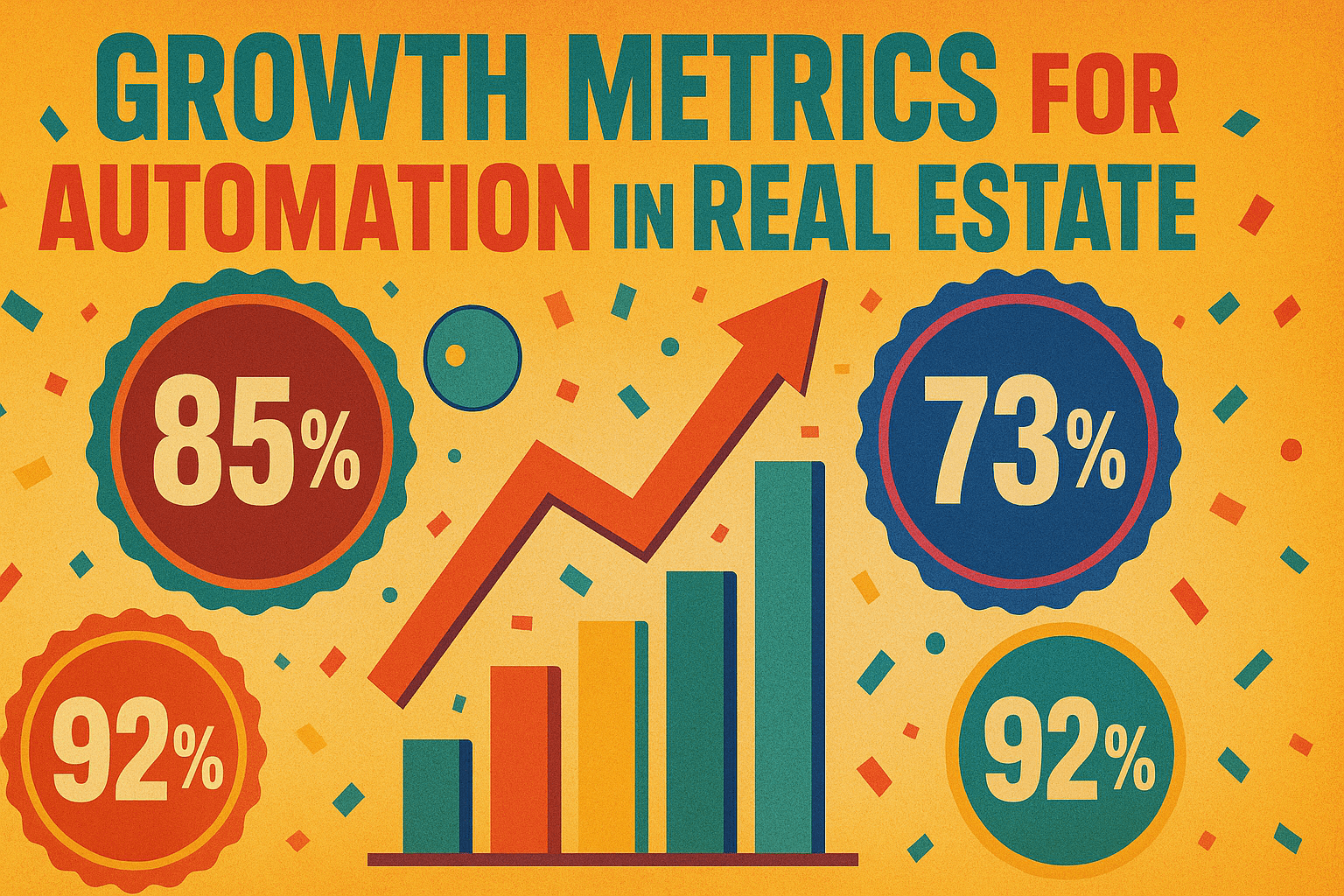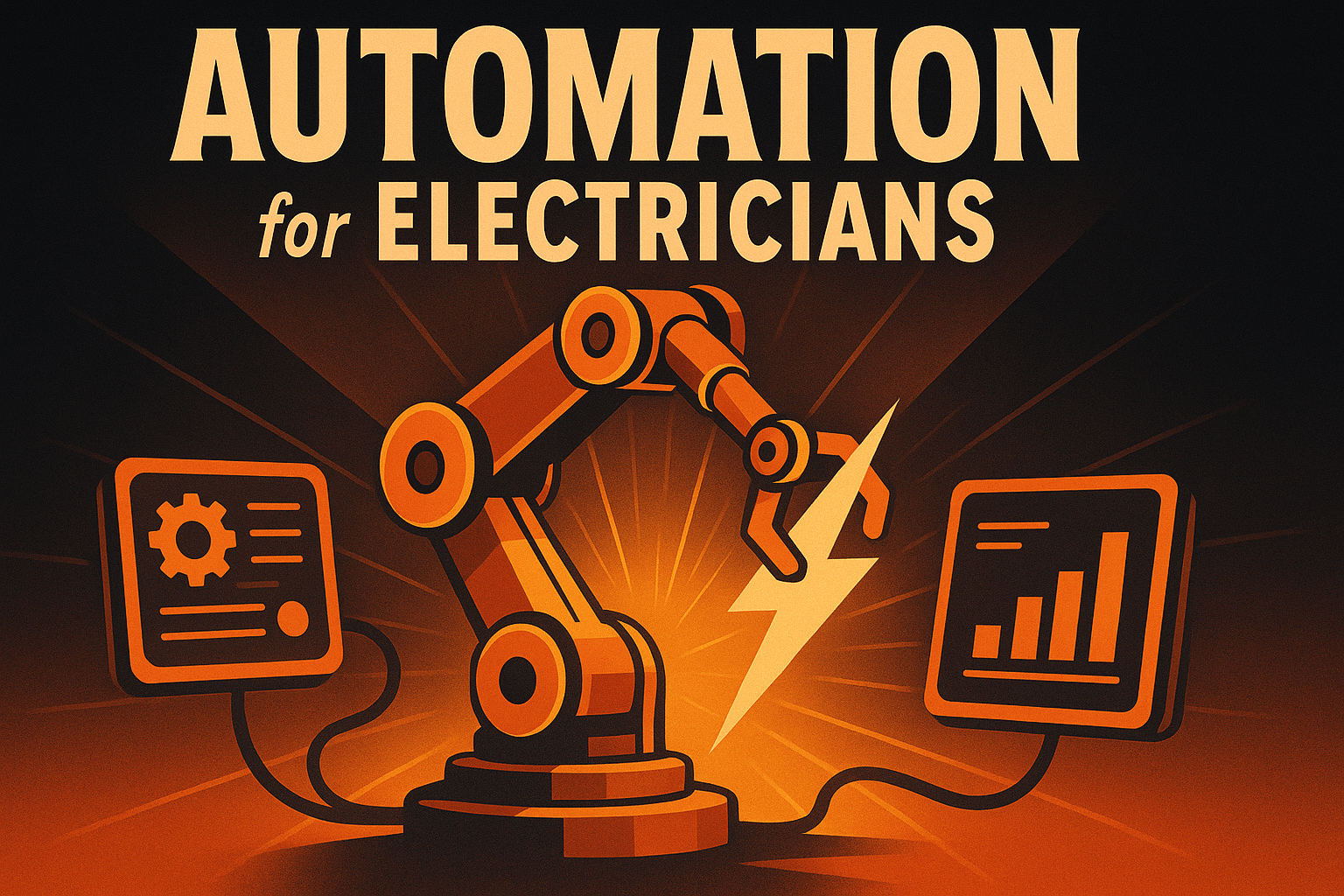Automation for Real Estate: Transform Your Business with Smart Workflows
by Design Delulu Editorial · October 4, 2025

Discover proven automation strategies that help real estate professionals close more deals, nurture leads effortlessly, and scale operations without adding headcount.
Why Automation Matters for Real Estate
Real estate professionals spend an average of 40% of their time on administrative tasks—scheduling showings, following up with leads, updating CRM records, and sending routine communications. This time drain keeps agents and brokers from what they do best: building relationships and closing deals. Automation for real estate eliminates these bottlenecks, allowing you to focus on high-value activities while technology handles the repetitive work. When implemented correctly, automation doesn't replace the human touch; it amplifies it by ensuring no lead falls through the cracks and every client receives timely, personalized attention.
The competitive advantage is measurable. Real estate businesses using automation see 30-50% faster lead response times, 20-35% increases in conversion rates, and significant reductions in operational costs. Whether you're a solo agent managing dozens of listings or a brokerage coordinating hundreds of transactions, automation creates consistency, improves client experience, and delivers the scalability needed to grow without proportionally increasing overhead. The question isn't whether to automate—it's how to do it strategically so every workflow delivers ROI.

What Can You Automate in Real Estate?
Automation for real estate spans the entire client lifecycle, from lead capture to closing and beyond. The most impactful areas include lead nurturing sequences that automatically send property recommendations based on prospect behavior, appointment scheduling that syncs with your calendar and sends reminders, transaction management that tracks deadlines and documents, and client communication workflows that deliver market updates and personalized check-ins. Modern automation tools can also handle social media posting, email marketing campaigns, listing syndication across multiple platforms, and even predictive analytics that identify your hottest prospects.
The key is prioritizing workflows that deliver the highest return. Start with lead response automation—research shows that responding to leads within five minutes increases conversion by 400%. Then layer in nurture sequences that keep your brand top-of-mind during long sales cycles. From there, expand to transaction coordination, client retention campaigns, and referral request automation. Each workflow should tie directly to revenue outcomes or time savings that can be reinvested in revenue-generating activities.
Key Benefits of Real Estate Automation
- Lightning-Fast Lead Response: Automatically engage new leads within minutes with personalized messages, property suggestions, and scheduling links, ensuring you're always first to respond.
- Intelligent Lead Nurturing: Deploy multi-touch email and SMS sequences that adapt based on prospect behavior, property views, and engagement patterns, keeping leads warm until they're ready to convert.
- Seamless Transaction Management: Track deadlines, document requirements, and milestone communications automatically, reducing errors and ensuring nothing falls through the cracks during critical closing periods.
- Personalized Client Experience at Scale: Deliver tailored market updates, property alerts, and anniversary messages to hundreds of clients simultaneously while maintaining a personal touch.
- Data-Driven Decision Making: Centralize client data, track engagement metrics, and generate insights that inform your marketing strategy and help you double down on what works.
- Consistent Follow-Up Systems: Never miss a follow-up opportunity with automated reminders, task creation, and scheduled touchpoints that keep your pipeline moving forward.
Our Proven Automation Framework for Real Estate
- Discovery & Strategy Session: We start by understanding your unique business model, pain points, and growth goals. We map your current workflows, identify bottlenecks, and define specific success metrics—whether that's reducing lead response time, increasing conversion rates, or reclaiming hours each week. This phase establishes clear outcomes and ensures automation aligns with your business objectives.
- Workflow Blueprint & Architecture: We design your automation ecosystem, selecting the right tools and platforms for your needs. This includes mapping lead sources to CRM workflows, designing nurture sequences with decision trees, planning integration points between your website, CRM, email platform, and transaction software. We create detailed process documentation and approval checkpoints so you know exactly what's being built.
- Build, Test & Launch: Our team implements your automation workflows, configures integrations, and conducts rigorous testing to ensure everything fires correctly. We set up tracking mechanisms to monitor performance, create fallback protocols for edge cases, and provide training for your team. Launch happens in phases, starting with your highest-priority workflows and expanding from there.
- Optimize & Scale: Post-launch, we monitor performance metrics, identify optimization opportunities, and make data-driven refinements. We A/B test messaging, adjust timing and frequency, and expand successful workflows to new segments. Regular review sessions ensure your automation continues delivering ROI and evolves with your business needs.

What You Get: Comprehensive Automation Deliverables
Strategic Planning & Documentation
- Workflow Mapping Document: Visual diagrams showing every automation trigger, action, and decision point across your lead-to-client journey.
- Integration Architecture: Technical blueprint connecting your CRM, email platform, website forms, transaction software, and communication tools.
- Content Library: Pre-written email sequences, SMS templates, and communication scripts customized for your brand and local market.
Technical Implementation
- CRM Configuration: Custom fields, pipelines, automation rules, and scoring models tailored to real estate sales cycles.
- Lead Capture & Routing: Automated systems that capture leads from your website, social media, and advertising, then route them to the right agent or team member.
- Nurture Sequences: Multi-step email and SMS campaigns triggered by specific actions, with branching logic based on engagement.
- Appointment Scheduling: Automated booking systems that sync with calendars, send confirmations and reminders, and reduce no-shows.
Measurement & Reporting
- Performance Dashboards: Real-time visibility into lead response times, conversion rates, email engagement, and pipeline velocity.
- ROI Tracking: Clear metrics showing time saved, revenue attributed to automation, and efficiency gains across your business.
- Optimization Recommendations: Quarterly reports with data-driven suggestions for improving workflow performance.
Best Practices for Real Estate Automation Success
- Start with High-Impact, Low-Complexity Workflows: Begin with lead response automation and basic nurture sequences before tackling complex transaction management or advanced segmentation.
- Maintain the Human Touch: Use automation to handle routine tasks while reserving personal outreach for high-value moments—first calls, negotiations, closings, and relationship-building.
- Test Before Scaling: Run every workflow through multiple test scenarios to catch errors before they reach real clients. Check timing, personalization tokens, and mobile rendering.
- Segment for Relevance: Create separate workflows for buyers versus sellers, luxury versus entry-level, and hot versus cold leads to ensure messages resonate.
- Monitor and Iterate Weekly: Review automation performance every week, looking for drop-off points, unsubscribe spikes, or workflows that aren't converting as expected.
- Build Fallback Systems: Always have manual processes ready for when automation fails or when situations require human judgment and flexibility.
- Comply with Regulations: Ensure all automated communications follow CAN-SPAM, TCPA, and local real estate regulations regarding disclosures and opt-out mechanisms.
Industry-Specific Strategies for Real Estate
- Map Automation to Buyer Journey Stages: Create distinct workflows for awareness (market education), consideration (property matching), and decision (transaction support) stages, with content and cadence appropriate to each phase.
- Leverage Behavioral Triggers: Automatically escalate leads who view multiple properties, return to listings repeatedly, or engage with mortgage calculators—these signals indicate purchase readiness.
- Automate Hyperlocal Content Delivery: Set up workflows that send neighborhood guides, school district info, and local market updates based on geographic preferences and search behavior.
- Implement Listing Alert Automation: Automatically notify interested prospects when properties matching their criteria hit the market, giving you first-mover advantage.
- Create Referral Generation Loops: Build post-closing workflows that request reviews, ask for referrals at strategic intervals, and keep past clients engaged with market updates and home anniversary messages.
- Use Predictive Scoring: Implement lead scoring models that automatically prioritize prospects based on engagement, property views, price range, and timeline indicators.
- Coordinate Team Communications: For brokerages, automate internal notifications about lead assignments, showing feedback, offer status, and transaction milestones to keep everyone aligned.

Real Results from Real Estate Automation
Our clients typically see measurable improvements within the first 30 days of implementation. Lead response times drop from hours to minutes, nurture sequences generate 25-40% more qualified appointments, and agents reclaim 10-15 hours per week previously spent on administrative tasks. One regional brokerage we worked with increased their lead-to-appointment conversion rate by 34% and reduced their cost per acquisition by 28% within three months of implementing comprehensive automation workflows.
The compound effect grows over time. Automation doesn't just handle today's leads—it systematically improves how your business operates at every level. Consistent follow-up increases conversion rates, data collection improves targeting, and time savings allow for more client-facing activities. The result is sustainable, scalable growth that doesn't require proportional increases in headcount or overhead.
Frequently Asked Questions
Let’s level up your Real Estate business
Need services that actually move the needle for Real Estate? See our approach, pricing, and timelines—then book a quick call.
Additional Resources
- Schedule Your Free Automation Strategy Call
Book a 30-minute consultation to discuss your real estate automation needs, learn about our implementation process, and get a custom recommendation for workflows that will deliver the highest ROI for your business.
- View Our Real Estate Automation Portfolio
See real examples of automation workflows we've built for real estate professionals, including lead nurture sequences, transaction management systems, and CRM implementations that drive measurable results.
- Access Free Real Estate Marketing Tools
Download free templates, calculators, and resources including email sequence templates, lead scoring worksheets, automation workflow diagrams, and CRM comparison guides designed specifically for real estate professionals.
Related Reading

Discover how automation for electricians streamlines scheduling, invoicing, lead tracking, and customer follow-ups to boost revenue and efficiency. Get started today.

Discover how automation streamlines furniture & home decor operations with GA4 tracking, attribution modeling, and data-driven dashboards. Get your 90-day implementation roadmap.
